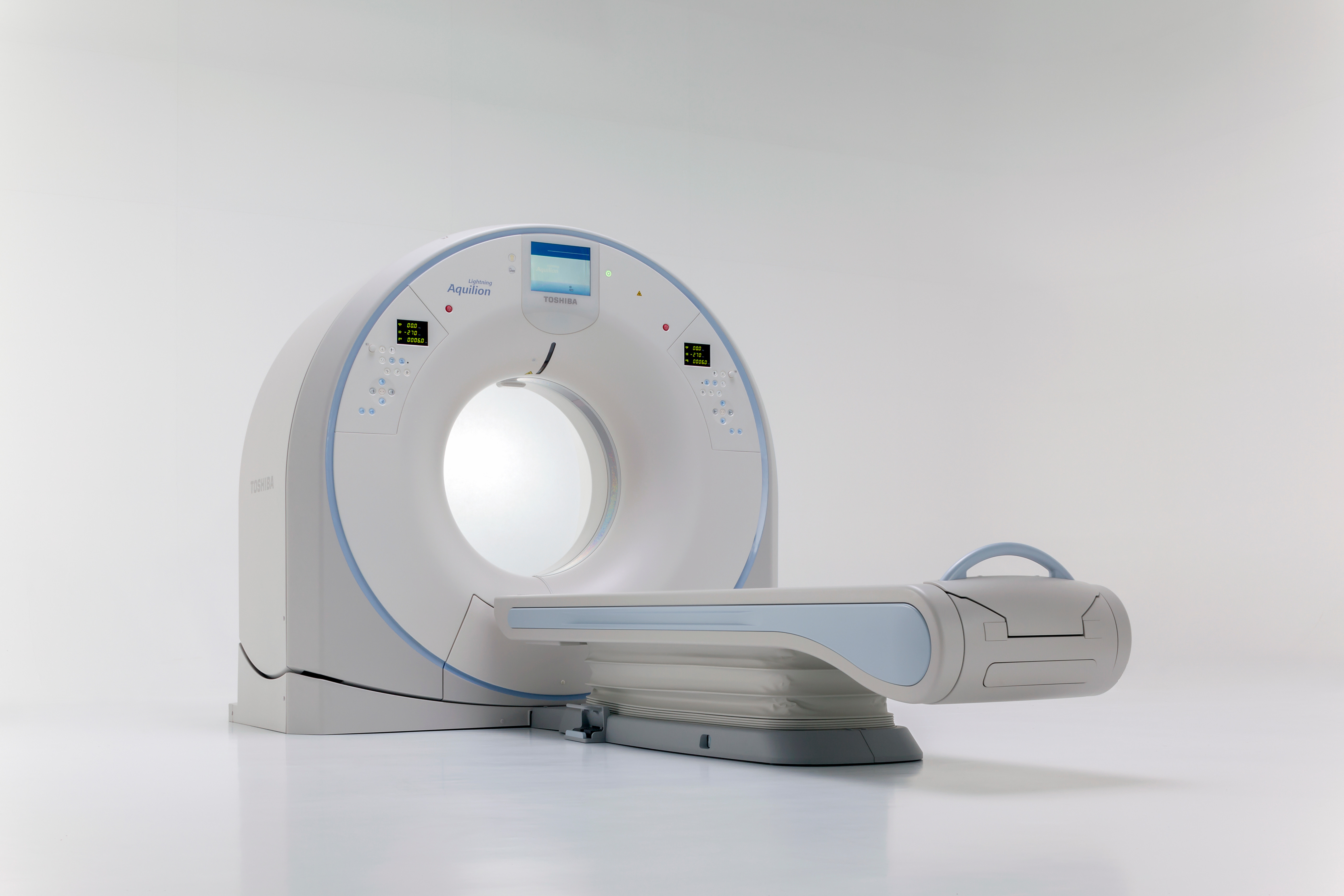
Photo courtesy of Toshiba
Perhaps no issue has taken on more prominence in radiology than radiation safety for both patients and hospital staff. Several regulatory bodies have enacted guidelines in recent years to improve radiation dose monitoring and reporting for computed tomography (CT), including the Medical Imaging and Technology Alliance (MITA), which created the XR-29 “Smart Dose CT” standard. Beginning Jan. 1, 2016, the standard levied a reduction in Medicare reimbursement on the technical component of all diagnostic CT exams conducted on a non-compliant scanner. The initial reduction was set at 5 percent, but it jumped to 15 percent as of Jan. 1, 2017, giving providers and vendors even more incentive to closely monitor and manage dose.
New CT Systems
In the last 12 months, several CT vendors have introduced new systems with the latest in dose reduction hardware and software.
Siemens Healthineers has received U.S. Food and Drug Administration (FDA) approval for three new CT systems in the last calendar year, beginning with the Somatom Drive dual-source CT last August. The Somatom Drive employs the company’s new Straton MX Sigma X-ray tubes and Sigma generators, which allow more targeted beam focusing and enable exams using high energy levels at low voltages. Tube voltages range from 70 to 140 kV, and operators can adjust them in 10 kV increments. The company said this technology could be especially beneficial in lung CT scans for cancer screening.
More recently, Siemens introduced the Somatom go. Platform, which includes the go.Up and go.Now, at the 2016 Radiological Society of North America (RSNA) annual meeting last November; both systems received FDA clearance in April. The central theme of the platform is automated and standardized workflows for more consistent clinical results.
Tin filtration comes standard on both scanners, combining with a new Stellar detector to produce the lowest radiation doses for a CT of this class, according to Siemens. Full routine scans can be completed using only a tablet and the remote.
Toshiba also launched a new CT scanner in 2017 when the Aquilion Lightning hit the market in April. Designed for an entry-level price point, the 160-slice Aquilion Lightning offers many of the same features of a premium system in a smaller package. This includes Toshiba’s Adaptive Iterative Dose Reduction 3-D (AIDR 3-D) Enhanced software for achieving high-quality diagnostic images at lower doses. The new scanner also includes SUREExposure software that calculates the minimum radiation exposure required for every exam, and SUREkV, which automatically selects the lowest suitable voltage based on patient size.
GE Healthcare’s Revolution family of CT scanners utilizes adaptive statistical iterative reconstruction (ASiR) technology to reduce noise in the captured image, allowing operators to perform scans at a lower dose. This combines with OptiDose technology to enhance dose reduction capacity.
Third-party Dose Products
A number of third-party products have also been introduced in the last calendar year, though these types of products are treated differently in regard to XR-29 compliance. New guidelines released by the American College of Radiology (ACR) this past February state third-party products must have obtained FDA 510(k) approval and must be approved by the Centers for Medicare and Medicaid Services (CMS) in order for their certificates of XR-29 compliance to be acceptable.
At press time, Medic Vision’s SafeCT-29 software was the only FDA- and CMS-approved third-party dose upgrade product on the market. The vendor neutral add-on solution offers full compliance with all XR-29 Dose Check and Radiation Dose Structured Report (RDSR) requirements, analyzing dose data directly from the scanner in real time. The software will generate an alert if it detects the dose is too high, and will prevent the scan from initiating until the operator changes, confirms or justifies the dose level.
Zetta Medical Technologies introduced Zia, its own third-party iterative reconstruction software, in January that the company said is compatible with CT equipment from all major manufacturers. With the software, CT operators can employ low-dose protocols to complete exams. Zia then receives the low-dose images via DICOM, processes them and automatically transfers them to the picture archiving and communication system (PACS).
On the Horizon
Philips Healthcare did not release a new CT scanner in the last calendar year, but it did display the next generation of its DoseWise Portal at RSNA 2016. DoseWise Portal 2.2 will integrate with a variety of Philips’ health information technology (IT) systems — including IntelliSpace PACS and IntelliBridge Enterprise — plus third-party dictation software to streamline the capture of and access to patient dose information. Dose data will be automatically populated into dictation reports to save time and transcription errors. Version 2.2 will also reportedly offer expanded connectivity to Philips DoseAware products, allowing users to see all dose data in one screen.
DoseWise Portal 2.2 is still in the research phase of development, according to Philips.
CT Dose Management Systems Comparison Chart
ITN has created a CT Dose Management Systems comparison chart of the specifications for these systems. This will require a login, but it is free and only takes a minute to register. The chart includes many manufacturers of CT Dose Management Systems that are available in the United States.


 December 03, 2025
December 03, 2025 








